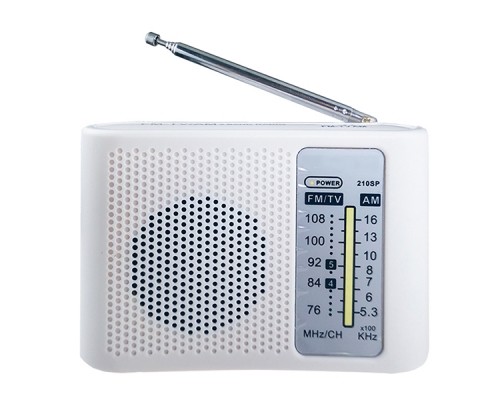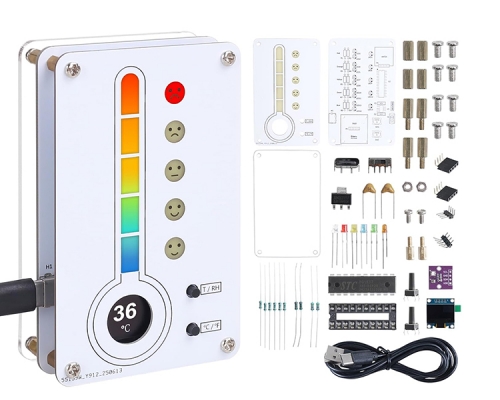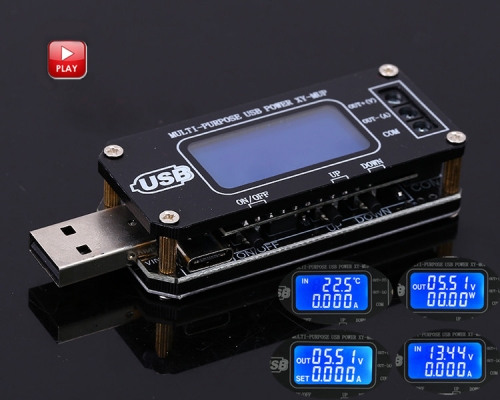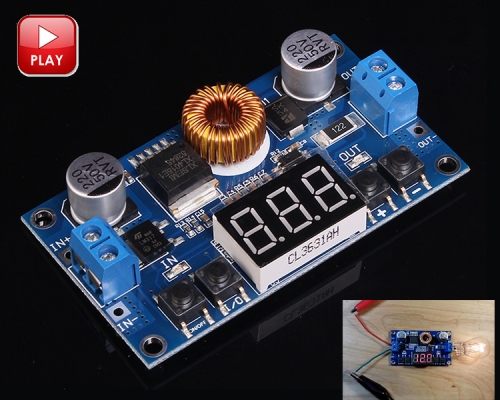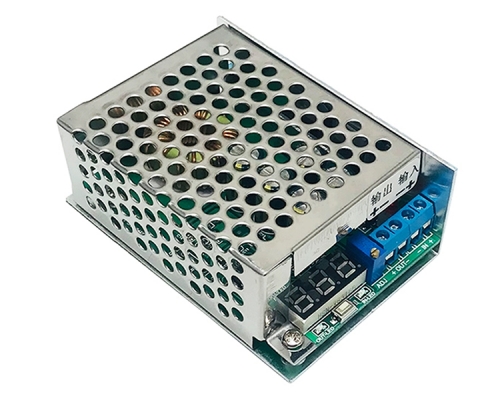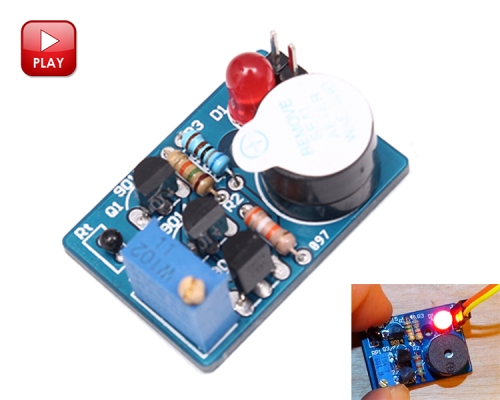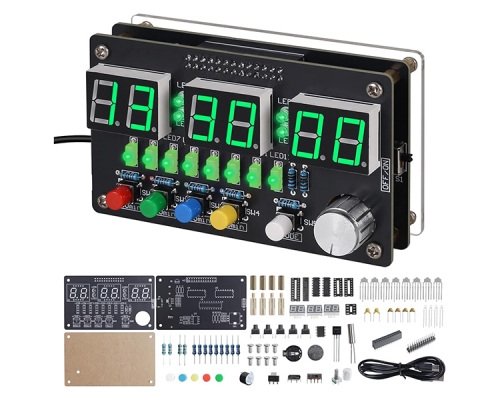Soldering Practice Kit, LM2596 Universal 1.5V/3.3V/5V/12V Adjustable Voltage Output Power Supply DIY Kits for Electronic Soldering Practice Experiments and Testing
$12.99
Item ID: GY21559-1
Product Details
About this item
【STEM Learning Soldering Kit】DIY Power Supply Kit features a majority of through-hole components, complemented by a few surface-mount devices, making it ideal for soldering practice and highly practical for real-world applications.
【Manual in Paper】The included paper manual with the package provides you with color-printed soldering steps and detailed textual instructions, ensuring you can clearly understand every detail of the operation.
【Multiple Output】The power module offers a total of five independent outputs, including one adjustable voltage output, which greatly meets the diverse needs of electronic DIY, soldering practice, experimental testing, and more.
【ADJ Output Display】LM2596 power supply module features a digital display that clearly shows the voltage values when adjusting the output voltage. The maximum voltage display error is no more than 0.45V.
【Power Switch】Universal power supply module comes with a dedicated power switch, eliminating the need for repetitive wiring and making it more convenient to use.
Parameter
Work Voltage: DC 12-20V
Output Power: 36w(Max)
OutputCH-1: DC1.5V(1AMax)
OutputCH-2: DC3.3V(3AMax)
OutputCH-3: DC5.0V(3AMax)
OutputCH-4: DC12V(3AMax)
Output CH -5: DC 2.2V to Vin
Use Steps
1>. Input Power from ‘15V’ ‘GND’ Terminal.
2>. Turn ON power switch to start working.
Screen and five output indicator turns ON.
3>. From left to right: OUT 1.5V/3.3V/5.V/12V
and the last Terminal for adjustable voltage.
4>. Screen for adjustable voltage. Rotary potentiometer to change output voltage for the rightmost Blue Terminal.
ATTENTION
1. Below 4V input, digital tube brightness drops; off at 3.8V.
2. Below 6.5V input, ADJ maxes at 6.5V; min is above 2.2V.
3. At 15V input, ADJ outputs 2.2V to 14.8V.
4. Above 15.2V input, ADJ caps output at 15.2V.
Note: The lower the input voltage, the greater the voltage difference, ranging from 0.1V to 0.3V.

